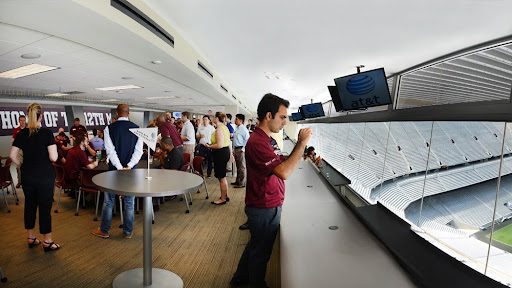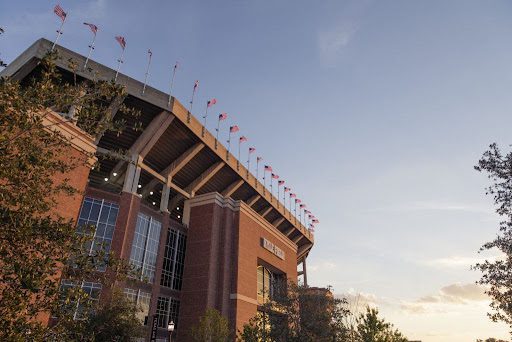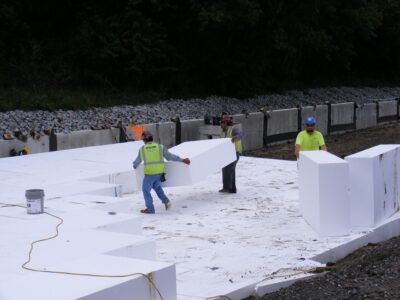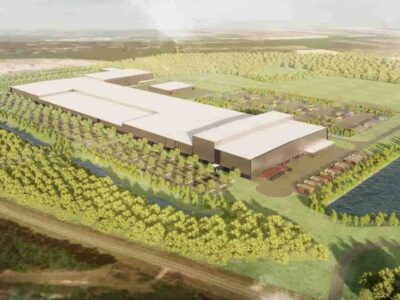Texas Agricultural & Mechanical University was founded in 1876 as a public university in College Station, Texas. It currently boasts the second largest student body in the U.S. It’s easy to assume that a school this old and this popular has a lot of traditions – and they do. But among the most cherished is football. Aggies don’t just like football, they love it! In addition to producing two Heisman Trophy winners, the Aggies have won 20 conference titles as well as three national titles.
Needless to say, the Aggies’ Kyle Field has long held the reputation among its opponents as being “one of the scariest places to play in college football.” It also stands among the most sustainable stadiums in college football; it ranked among the Five Green-est College Stadiums and sixth on the list of the Ten Most Energy-Efficient College Football Stadiums.
When the nearly century-old Texas A&M Kyle Field jumped into the 21st century with a massive renovation project, which took place between 2013-2015, that not only created one of college football’s largest stadiums, but also a highly environmentally attuned stadium. The updated version of Kyle Field contains energy-efficient improvements to its elevators, escalators, and lighting systems. Expanding upon its long history of recycling, Texas A&M outfitted the new Kyle Field with 200 recycling receptacles inside the stadium and at all the entrances, while compostable materials are utilized and sold throughout the stadium. Additionally, student volunteers pick up trash after home games, and typically 70 percent of it gets recycled. In total, Texas A&M has recycled over 45 tons in a given year.
Particularly essential to Kyle Field’s eco-overhaul, according to Texas A&M Utilities and Energy Services’ Supervisor of Energy Performance Improvement (EPI) Christopher Dieckert, were the adjustments to operating the mechanical systems. “The building automation systems program determines the amount of cooling or heating that is needed to meet comfort requirements and the dehumidification set points inside each space based upon (air temperature) sensor,” said Dieckert Low-tech, energy-conserving improvements were made as well. These alterations ranged from encouraging conservation efforts — like remembering to close doors — to larger projects, such as installing two large canopies situated on the east and west sidelines that provide fans with natural shade from the sun and allows for less air conditioning usage.

The stadium’s energy-saving upgrades have resulted in financial savings as well. From April 2019 to March 2020, Texas A&M saved more than $500,000 simply from more efficient energy usage. “With a venue as large as Kyle Field, even the smallest of changes will produce enormous benefits,” said Texas A&M’s Senior Associate Athletics Director for Facilities, Events, and Construction Kevin Hurley. “Saving over a half-million dollars in our first year is a great accomplishment.”
The entire Kyle Stadium renovation project, in fact, was a money saver for Texas A&M. Work was done during football’s off-seasons so that Aggies’ games didn’t need to be relocated; a move that avoided a $86 million loss in revenue. An additional financial victory was achieved because the construction job came in over $1.3 million under budget and on time.

Kyle Field’s sustainability accomplishments have encouraged further expansion of Texas A&M’s sustainability initiatives. In 2020, the university ranked first in Texas, and 63rd nationally, in the Sierra Club’s listing of Cool Schools for its sustainability efforts. Texas A&M also topped all other Southeastern Conference schools in the Sustainability Tracking, Assessment & Rating (STARS) System.
“The fact that we are being recognized nationally shows that Texas A&M is working to solve global issues,” Kelly Wellman, director of Texas A&M’s Office of Sustainability, stated. “That is the definition of sustainability — looking at better ways to utilize resources for the benefit of everyone.”
Texas A&M Aggies’ concern for the Earth is engrained in the school’s DNA. Both its “A” and “Aggies” are abbreviations for agriculture. Moreover, Kyle Field is named for Edwin Kyle, an A&M horticulture professor who led the drive at the turn of the century to promote athletics at the school. He “repurposed” campus land reserved for his horticultural studies to create an athletic field and spent approximately $960 of his own money to purchase benches and a grandstand for it. (that’s a far cry from the nearly $484 million spent on the new Kyle Field).From such humble grassroots origins, Kyle Field now stands as one of college football’s largest, most luxurious, and most sustainable stadiums.






